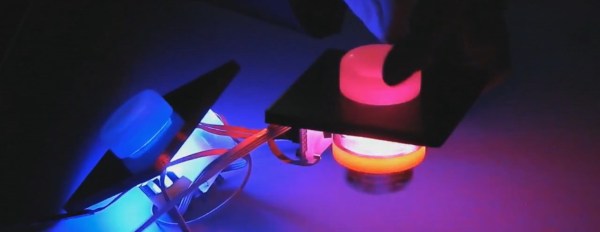[Tinker_on_Steroids] made some awesome looking spinners that not only light up when spun but are a really professional looking build on their own. Before we’d watched his assembly video we were sure he’d just added on to something he’d bought, but it turned out it’s all custom designed and made.
In case you’ve never played the old arcade games, a spinner is an input device for games such as Tempest or Breakout where you rotate a knob in either direction to tell the game which way and how fast to move something. In Tempest you rotate something around the middle of the screen whereas in Breakout you move a paddle back and forth across the bottom of the playing field.
He even detects rotation with a home-made quadrature encoder. For each spinner, he uses two ITR9608 (PDF) optical switches, or opto-interrupters. Each one is U-shaped with an LED in one leg of the U facing a phototransistor in the other leg. When something passes between the two legs, the light is temporarily blocked and the phototransistor detects it i.e. the switch turns off. When the thing moves away, the light is unblocked and it turns on again. The direction of movement is done by having the thing pass between two ITR9608’s, one after the other. The “things” that pass between are the teeth of a 3D printed encoder wheel. Continue reading “Awesome Illuminated Arcade Spinner”












